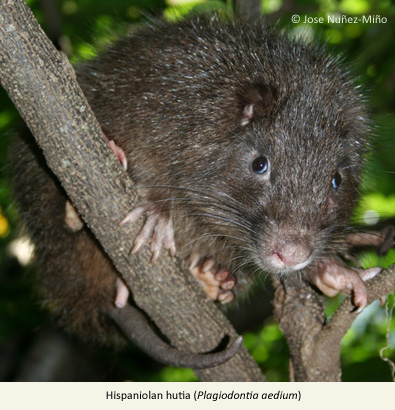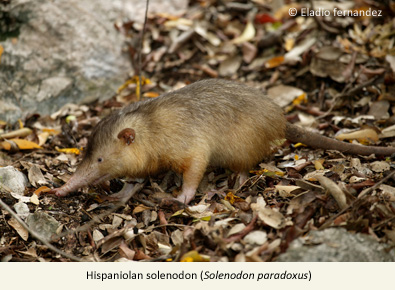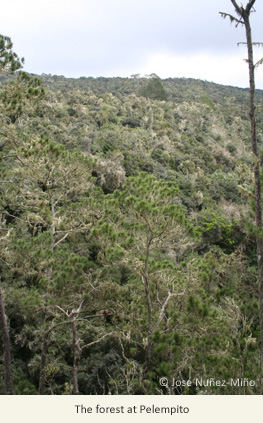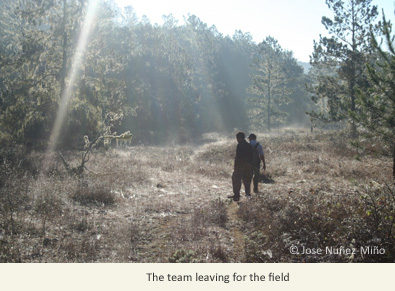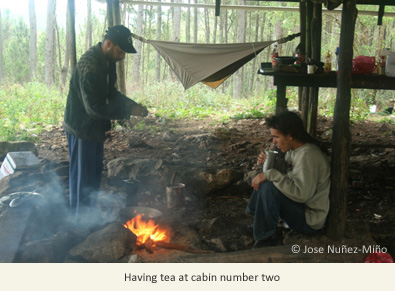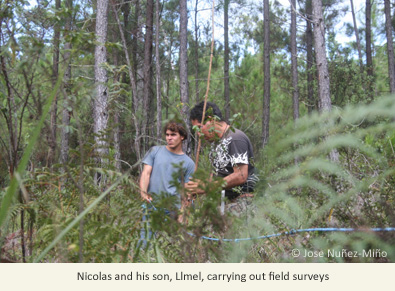JOE NUNEZ: As always, we have been pretty busy since our last blog posting. Pedro will tell you all about our latest rounds of field work but first I want to take the opportunity to update you on other fronts.
We have had our first training session over Skype with Daniela Rusowsky (www.funkproductions.wordpress.com) who is teaching all of us how to use a camcorder effectively in order to produce a series of infomercial films targeted at various audiences (kids, teenagers, organizations and for the international community). We have all had a bit of practice with the camera now and are having a good laugh filming each other, will let you know how this progresses. A series of PowerPoint presentations have also now been created for the educational department at the national zoo which is a great opportunity to let more people, particularly young people, know about these remarkable mammals.
The number of individuals and organisations which are showing an interest on the work we are carrying out is growing steadily. We are really keen to get as many of these to participate actively. It will be an ongoing process since they will be crucial in order to create a sustainable long term project. Particular thanks has got to go to ecological foundation of Punta Cana for allowing us access to their land as well as covering the cost of our food and lodging while working there. We have also had support from The Nature Conservancy and the National Geological Survey in the form of GIS layers (basically different types of electronic maps). These maps have already proven really helpful in planning our research and will be crucial later on in the project in order to analyse our results and come up with some management and monitoring suggestions.
Unfortunately I’m stuck in the office for the time being doing essential administrative stuff that I have been putting off. I’ll miss not being out there with our great team for the next week or so but the need not to stay out of the forest for too long will urge me on to get the less exciting but just as essential work out of the way. Right, I’ll hand you over to Pedro…
PEDRO MARTINEZ: On February 1st 2010, I officially joined the project “The Last Survivors“. Right away, we headed out to pick up Nicolas and LLeyo, the other two members of the field team. During our first night, we took a walk into the forest looking for some solenodon and hutia in order to collect tissue samples for genetic analysis. Thirty minutes later, LLeyo emerged with a solenodon in his hands. Amazing! The following day, we set up camp up at Pelempito (an area in the south west of the country inside Sierra de Bahoruco National Park) from where we started the field work.
A few days later, we moved to Fundacion Punta Cana in the East of the country where we found good evidence of both hutia and solenodon. From Punta Cana we returned to Santo Domingo for some office work, and to plan the next steps of field work. Having generated a series of the random points following the elevation gradient (from about 400m to over 2000m) within Bahoruco we headed back out to the field. Three days of heavy rain almost ended our expedition; however, we got lucky on the fourth day when a sudden change in the weather made all of us feel a lot better.
After three days of work in Pelempito we moved to a place known as cabin number two which is an old disused sawmill, one of the many distributed across the country, previously used for cutting down thousand of pines for timber. According to Nicolas, who by the way is a great story teller, it was here where a dog killed five solenodon in one night. According to old park guards, solenodon use to be common here and even use to scavenge near the cabin. Sadly, this is no longer the case.
So far, this last phase of the work has been the most demanding one, basically due to the steep slopes and the difficulty of getting into and out of some sites, particularly the ones in the tangling cloud forest. However it was definitely worth while. To our surprise, we found evidence of both hutia and solenodon in some parts of the upper Cordillera. The evidence suggests that they mainly occur in areas where broadleaf patches were relatively close by. We initially planned to go to one site a day but moral was high amongst the group and almost everyday we managed two sites.
We also had the chance to verify the story that Nicolas’ son, Yimell (an aspiring young biologist who came along with us), had told. He claimed that he had seen hutia dung in a mangrove area near the town of Pedernales (very close to the border with Haiti). At first there was a certain sense of disbelief about it, so, on our way back to Santo Domingo we stopped by the mangrove area and found clear signs of the presence of hutia, it was unbelievable.
Finally, the team this time will split in two. I will be working with Nicolas and LLeyo back in the area around cabin two and Joe will stay at the office finishing necessary reports. We will miss you man!!!!
